With the accelerated pace of modern life and the intensification of environmental pollution, more and more people are suffering from acne. The so-called “acne”, medically known as acne, is a destructive skin disease that not only affects the appearance, but also has a considerable impact on the patient’s psychology. If you suffer from acne, it is very important to treat it in time. Otherwise, acne pits or hypertrophic scars will be left in the skin lesions, and subsequent treatment will also be a big project. At present, the treatment of acne includes oral and topical drugs, acid brushing, photodynamic therapy, red and blue light and other methods. Among them, photodynamic therapy, as an emerging treatment method for skin diseases, has gradually attracted the attention of patients. It has shown remarkable efficacy in the treatment of skin problems such as rosacea, severe acne, sensitive skin, and hormonal face. Today I will take you to understand what photodynamic force is.
What is Photodynamic Therapy?
Photodynamic therapy is a highly selective non-invasive treatment technology that combines drugs and devices. It uses specific photosensitizers to concentrate in abnormally growing and actively proliferating tissues, and then irradiates the lesions with light of a specific wavelength, which excites the photosensitizers and causes photochemical reactions to produce some active oxygen species such as singlet oxygen and free radicals, leading to the inactivation of biological macromolecules and causing necrosis or apoptosis of abnormally proliferating cells, thereby destroying the target tissues.
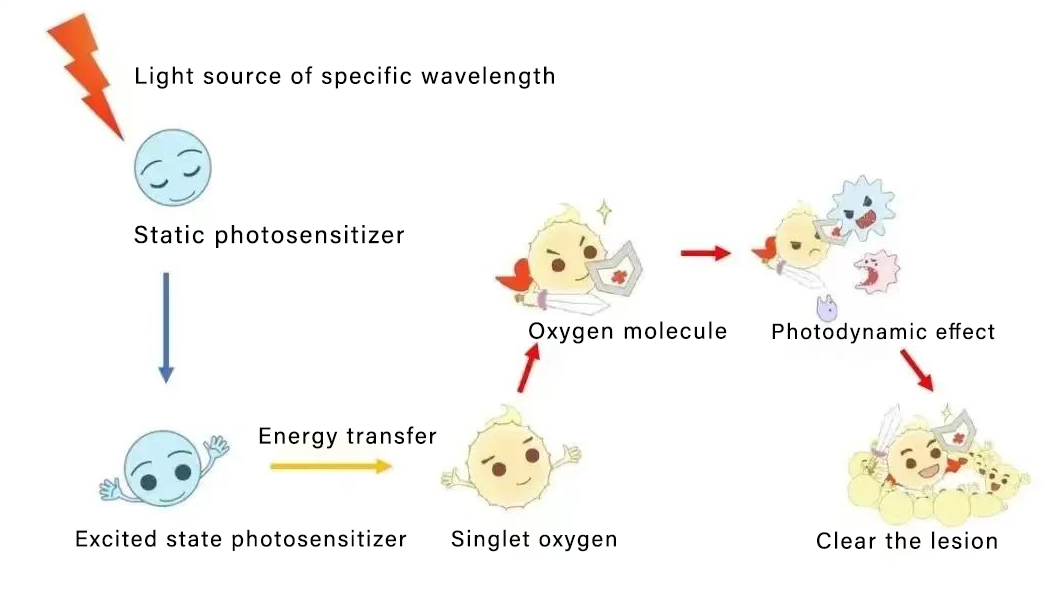
Equipment for Photodynamic therapy
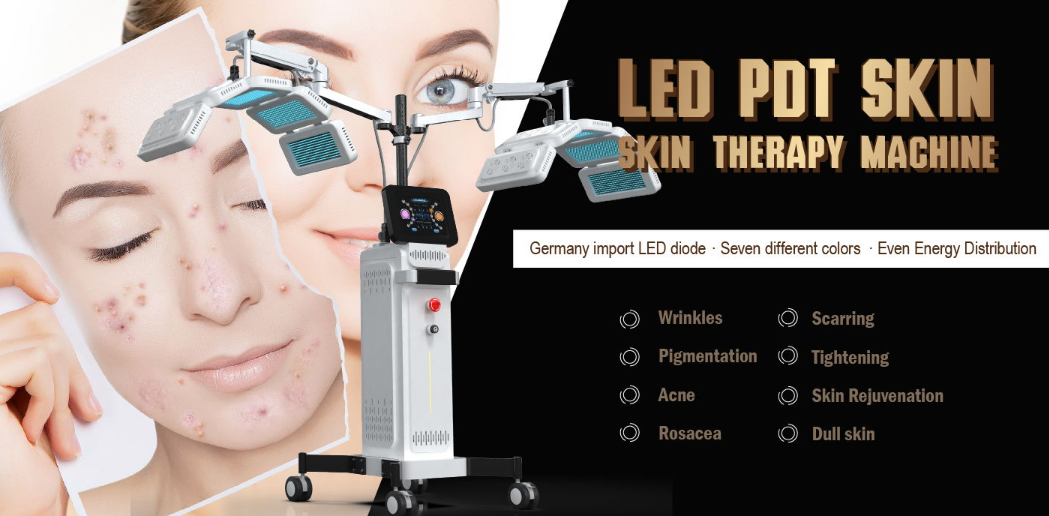
The first is about wavelength. The device usually contains LED lights of different wavelengths, each corresponding to a different therapeutic purpose.
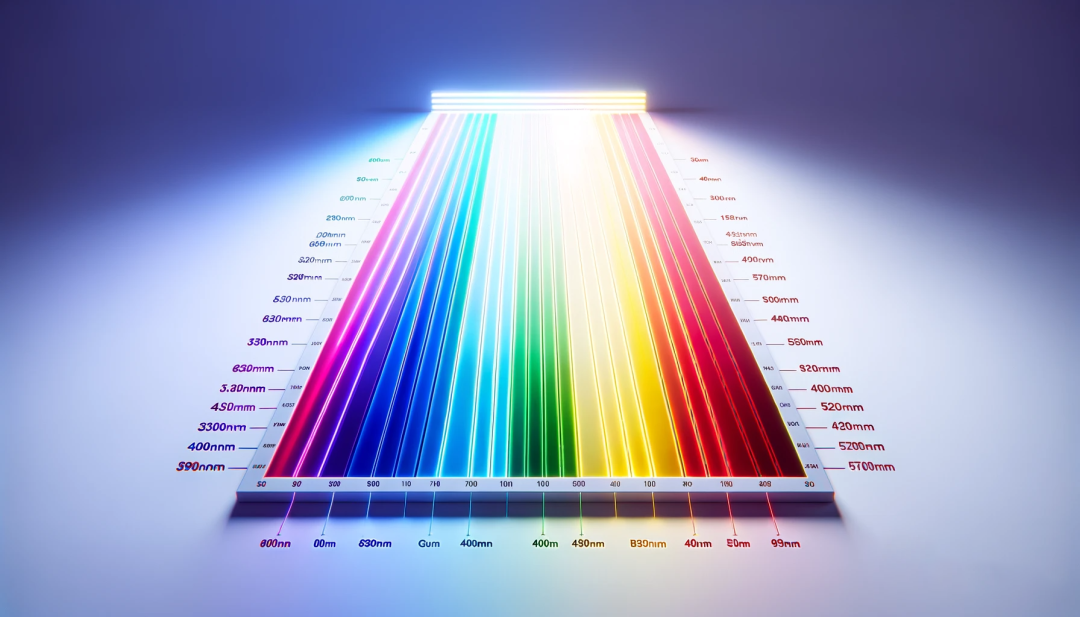
Red light (approximately 630nm – 700nm) can penetrate deeper into the skin, stimulate the production of collagen and elastin, thereby promoting cell growth, accelerating skin repair and regeneration; reducing fine lines and wrinkles by increasing skin elasticity and firmness; suitable for treating inflammatory skin diseases such as rosacea and sunburn.
Blue light (approximately 400nm – 495nm) has a killing effect on certain acne-related bacteria (such as Propionibacterium), thereby reducing acne; helping to control bacterial growth in the skin; reducing excessive oil production in the sebaceous glands, thereby reducing oily skin and acne formation.
Green light (approximately 495nm – 570nm) helps reduce pigmentation and improve uneven skin tone such as sun spots and age spots. It can also help relieve stress and has a soothing effect on sensitive skin. Yellow light (approximately 570nm – 590nm) helps stimulate the lymphatic system, promote skin detoxification, and help treat the skin by strengthening the immune system.
Ultraviolet light (approximately 100nm – 400nm) is used in some skin treatments (such as treating psoriasis), but it is generally not recommended for use in LED phototherapy due to its potential harm to the skin (such as increased risk of skin cancer).
The existing market devices mainly include facial masks, which are designed to cover the entire face and provide comprehensive light irradiation with evenly distributed LED lights. The characteristic is that it can provide a variety of spectrum options, usually including red light, blue light, etc., which is suitable for comprehensive facial care. Commonly used in home beauty care and professional beauty salons, suitable for regular skin care and treatment of specific skin problems; handheld devices mainly treat specific skin areas, usually equipped with one or more LED light sources, suitable for concentrated treatment of small areas of skin problems. Suitable for home use, especially for treating local problems such as acne and small-scale skin damage; vertical devices and bed-type devices are common in professional medical institutions and beauty salons, suitable for more comprehensive treatment procedures.
Photodynamic therapy for the face
I believe that many of you have acne troubles, with your face covered with acne, inflammatory papules, and even multiple cysts and nodules. Inflammation comes and goes, and hypertrophic scars and depressed scars are formed in the later stage. Acne marks become an indelible mark of adolescence. In addition to adolescent troubles, middle-aged and elderly friends also have the trouble of “rose” face, which is mainly manifested as paroxysmal flushing, erythema, papules, pustules, and capillary dilation of the facial skin. A small number of people have hypertrophic hyperplasia of the nose, which is clinically called “rosacea”. There are many embarrassing troubles, and it is not cured for a long time, which seriously affects the appearance.
What to do when you encounter acne troubles? Photodynamic therapy can help you fight acne and reduce redness!
Acne
Acne is a common dermatological disease and the most concerning cosmetic problem for young people. Conventional treatments for acne include topical or systemic antibiotics and retinoic acid drugs. Some patients have poor treatment effects or cannot tolerate adverse drug reactions, resulting in recurrence of acne. Photodynamic therapy is a good choice for patients with moderate and severe acne and has been widely used in clinical practice. Aiming at the main factors causing acne, photodynamic therapy can mainly play several therapeutic roles: photodynamic therapy targets the sebaceous glands of the hair follicles, which can lead to atrophy of the sebaceous glands with vigorous secretion, kill Propionibacterium acnes, directly inhibit acne inflammation and anti-inflammatory repair, and prevent acne scar formation.
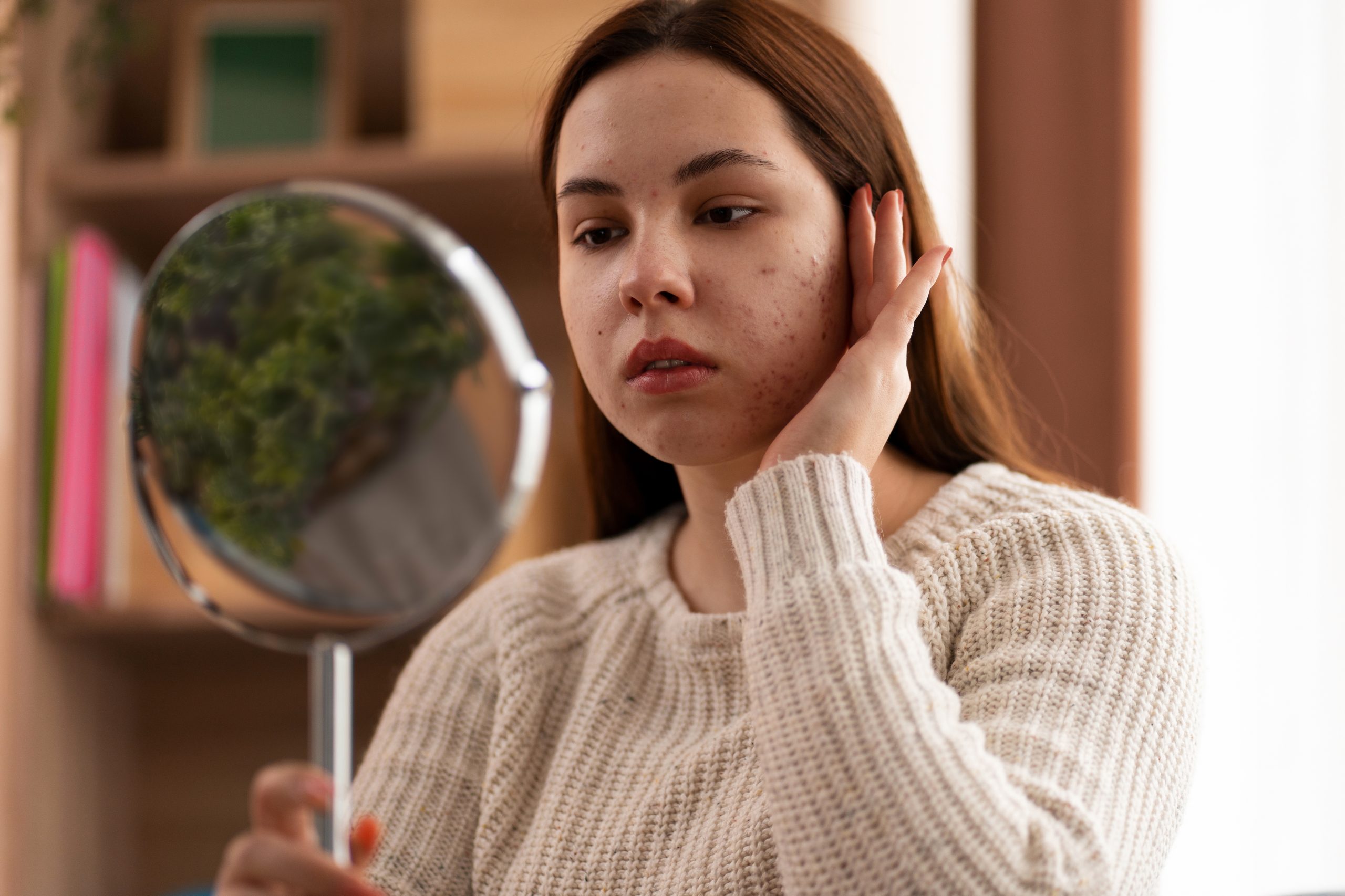
Photodynamic therapy can not only treat the face, but also other areas of treatment.For example:
HPV infection diseases
HPV infection diseases include genital warts, flat warts, common warts, high-risk HPV infection of the cervix, etc. Photodynamic therapy can not only remove viral warts, but also has a good therapeutic effect on latent viral subclinical infection. At the same time, for areas that are difficult to treat with lasers such as the urethra, vagina, cervix, and anal canal, photodynamic therapy can use light to reach the treatment area. At the same time, compared with traditional laser treatments, it can reduce local trauma and shorten the patient’s recovery period.
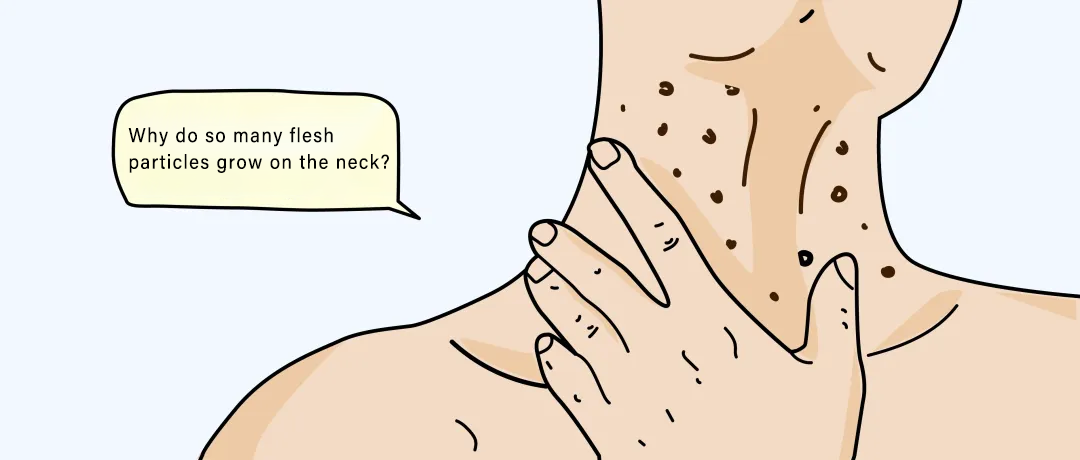
Skin tumors and precancerous lesions
Skin tumors and precancerous lesions were previously treated with surgery and other treatments. Photodynamic therapy is a good choice for some patients with contraindications to surgery. Current studies have shown that PDT can be effectively used for precancerous lesions and skin tumors, such as actinic keratosis, Bowen’s disease, superficial basal cell carcinoma, and early cutaneous squamous cell carcinoma. In Europe and the United States, it has been included in the latest diagnosis and treatment guidelines for early squamous cell carcinoma. PDT has good therapeutic and cosmetic effects in the treatment of skin tumors. PDT combined with other therapies is expected to provide precision treatment for patients with skin tumors. With the development of photosensitizers and sensitizers, and the application of new light sources, the tumor indications of PDT will continue to expand.
Other diseases
In addition to the above diseases, photodynamic therapy is also used in dermatology to treat port-wine stains, photoaging of the skin, lichen planus, photocheilitis, fungal infections, rosacea and other diseases.
PDT light therapy benefits
1.Non-invasive and non-dependent
2.Targeting the hyperplasia of hair follicles and sebaceous glands
3.Short course of treatment, quick effect, easy operation
4.Multi-dimensional anti-redness and anti-inflammation
5.Combination of treatment and beauty
6.Inhibit the formation of acne pits, make scar tissue lighter, reduce the scar area, and soften scars
At the same time, photodynamic therapy can eliminate invisible lesions and has a good clearing effect on subclinical HPV infection, thereby reducing the recurrence rate.
What are the precautions for photodynamic therapy?
1.Pay attention to sun protection before and after treatment, and avoid eating spicy and irritating foods;
2.Avoid eating light-sensitive foods and drugs;
3.Avoid light for 24 hours after treatment and pay attention to protection;
4.Pay attention to hydration and moisturizing after treatment, and use medical repair products.





